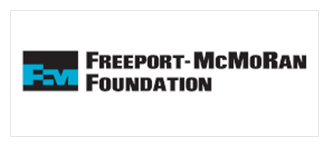 Income and Earnings Report for Southern Arizona Cities, Towns, and Census-Designated Places
Income and Earnings Report for Southern Arizona Cities, Towns, and Census-Designated Places
In 2021, income and earnings varied significantly across cities, towns, and census-designated places located in Southern Arizona. Hereafter, when discussing multiple cities, towns, or census-designated places (CDP) the general term communities will be used. This article explores 41 of the largest communities within Cochise, Pima, Pinal, Greenlee, Graham, Santa Cruz, and Yuma counties. Due to the importance of mining in Greenlee County, we also include three nearby communities in New Mexico.
Median household income is often viewed as one way to gauge the economic well-being of a region. Household income provides information to local officials, businesses, and policymakers about the financial resources available to households and is closely linked to employment levels, educational attainment, and regional economic opportunities. Higher household incomes are commonly associated with a greater means of acquiring goods and services.
Residents in the Vail and Tanque Verde CDPs both had median incomes above $105,000, the highest among the 41 Southern Arizona communities. Those residing in South Tucson posted a median household income of $31,907, the lowest among communities in Southern Arizona. Of the 41 Southern Arizona communities examined, only 11 had a median household income higher than the U.S. of $69,021 and 13 higher than the Arizona level of $65,913. Figures 1a and 1b explore the median household income for the Southern Arizona communities ranked highest to lowest.
Figure 1a: Median Household Income for Top Ranking Southern Arizona Communities (2021)
Figure 1b: Median Household Income for Bottom Ranking Southern Arizona Communities (2021)
According to the income distribution across brackets, in Arizona, 5.5% of households earned less than $10,000 in 2021, comparable to the national average. Communities in Southern Arizona with the largest shares of residents in the lowest income bracket are the cities of South Tucson and Willcox with 15.8% and 13.7%, respectively. On the other end of the income spectrum, 9.5% of households in the U.S. earned a median income of $200,000 or more. The rate was slightly lower for the state of Arizona at 7.4%. The Catalina Foothills CDP posted a very large share at 24.9%, 15.4 percentage points higher than the nation. The Tanque Verde CDP and the town of Oro Valley followed with shares that were also higher than the national value, at 18.2% and 15.2% respectively. Figure 2 below highlights the income distribution for each of the 41 communities explored in Southern Arizona.
Figure 2: Income Distribution for Households (2021)
During 2021, 77.8% of U.S. households reported earnings from work. The U.S. rate was almost 2.3 percentage points higher than the state of Arizona at 75.5%. Several Southern Arizona communities exceeded the U.S. rate including the city of San Luis (90.3%), the town of Clifton (88.7%), the Rio Rico (87.2%), and the Corona de Tucson CDPs. (85.6%). The Green Valley CDP reported the lowest rate of households earning income at 25.0%. Keep in mind that Green Valley is considered a retirement community, therefore, reducing earnings for households. Earnings include the sum of wages or salary income and net income from self-employment. Earnings represent the amount of income received regularly before deductions. Please note that earnings and income are separate concepts with income including earnings as well as interest, dividends, net rental income, royalty income, income from estates and trusts, social security, and transfer receipts (supplemental security income, public assistance such as welfare and disability, unemployment compensation, child support, and alimony). Figure 3 illustrates the percentage of households with reported earnings for the Southern Arizona communities.
Figure 3: Percent of Households with Earnings (2021)
In the state of Arizona, 33.6% of households received social security, a slightly higher rate than the nation at 31.1%. Of the 41 Southern Arizona communities explored in this article, 31 had social security rates higher than the U.S. Among these communities were the town of Florence (58.8%), the city of Bisbee (56.6%), and the Ajo CDP (55.3%), Green Valley CDP reported the highest rate of social security payments at 84.7%, this is not surprising given the large number of retirees in the area. The Morenci CDP and the town of Clifton reported the lowest rates of social security payments at 5.7% and 19.7%, respectively. Mining is very important for both Morenci and Clifton, with mining and mineral processing employing up to two-thirds of the workforce (Arizona Commerce Authority, Community Profile). As the 2021 Southern Arizona Communities Snapshot explores, Morenci and Clifton also have populations with a low median age relative to many of the other Southern Arizona communities, the state, and the U.S.
Figure 4: Percent of Households Receiving Social Security (2021)
Retirement income in Southern Arizona follows a pattern similar to social security, as we would expect. The U.S. percentage of residents receiving retirement income was 22.0% in 2021. Within Southern Arizona, 30 of the 41 communities reported a higher rate of retirement income than the U.S. Retirement income generally flows to older residents. Several of the communities explored in Southern Arizona report a substantially higher median age than the U.S. with Green Valley CDP leading the way at 73.0. Further, the city of Bisbee, and the Ajo, Catalina, and Tanque Verde CDPs all reported a median age over 55. More than half of the households in Green Valley CDP received retirement income in 2021, while places like the cities of San Luis and Somerton, with a younger median age, tended to report low percentages of retirement income (See Figure 5).
Figure 5: Percent of Households Receiving Retirement Income (2021)
Just over five percent of households in the U.S. received supplemental security income during 2021. This was slightly higher than the state of Arizona’s rate of 4.2%. While many of the communities in Southern Arizona had supplemental security income rates near the U.S. and state rate, notable exceptions include the Ajo CDP at 10.8%, the town of Duncan (10.6%), and the city of Douglas (10.5%). The Rio Rico, Catalina Foothills, Tanque Verde, and Casas Adobe CDPs, the towns of Oro Valley and Florence, and the city of Somerton reported the lowest rates of supplemental security income received, averaging 2.3%. Supplemental security income is a federal income supplement program designed to help aged, blind, and disabled people (Social Security Administration). Figure 6 highlights the percentage of supplemental security income received by households for each of the Southern Arizona communities.
Figure 6: Percent of Households Receiving Supplemental Security Income (2021)
In 2021, 11.4% of U.S. households and 10.2% of households in Arizona received help through the Supplemental Nutrition Assistance Program (SNAP). SNAP offers nutritional assistance to eligible, low-income individuals and families (United States Department of Agriculture, Food and Nutrition Service). In Southern Arizona, there was wide variation in the percentage of households that received SNAP benefits. The Tanque Verde CDP had the lowest percentage of households with SNAP assistance at 0.7%, while 47.1% of households in the city of South Tucson received assistance. Overall, 25 of the 41 Southern Arizona communities reported a higher percentage of SNAP assistance for households than the U.S. rate (See Figure 7).
Figure 7: Percent of Households Receiving SNAP Assistance (2021)
To learn more about median household income at the metropolitan or state level visit the MAP Dashboard core indicator Median Household Income. Additional information about the Southern Arizona places, including median age, can be found in the recent Southern Arizona Cities and Towns Snapshot.












